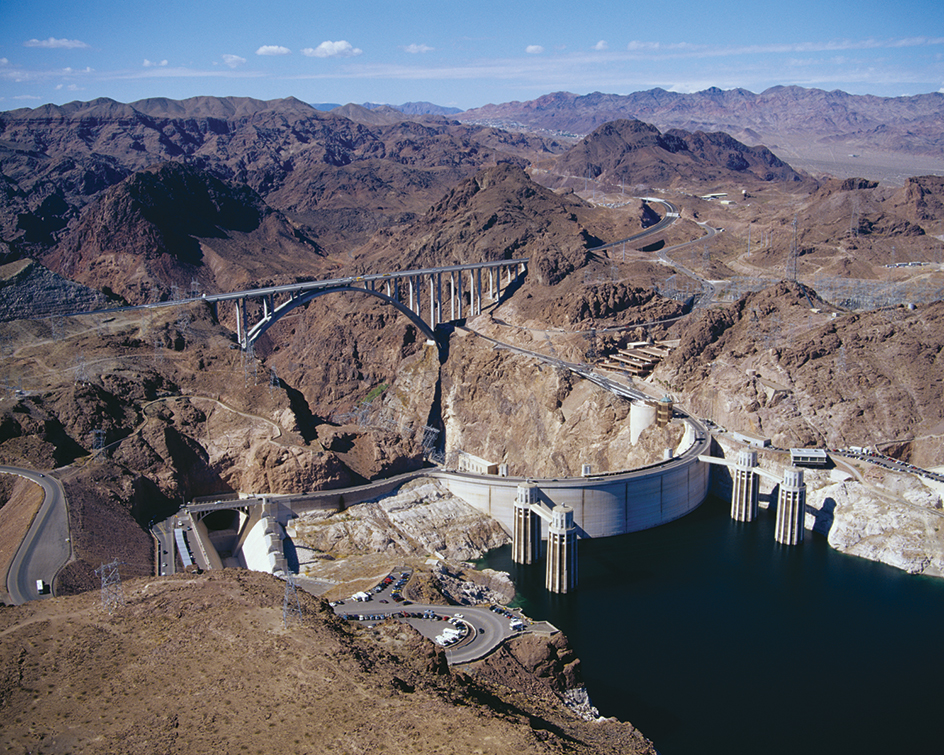Irrigation is the watering of land by artificial methods. It provides water for plant growth in areas that have long periods of little or no rainfall. The water used for irrigation is taken from lakes, rivers, streams, and wells.
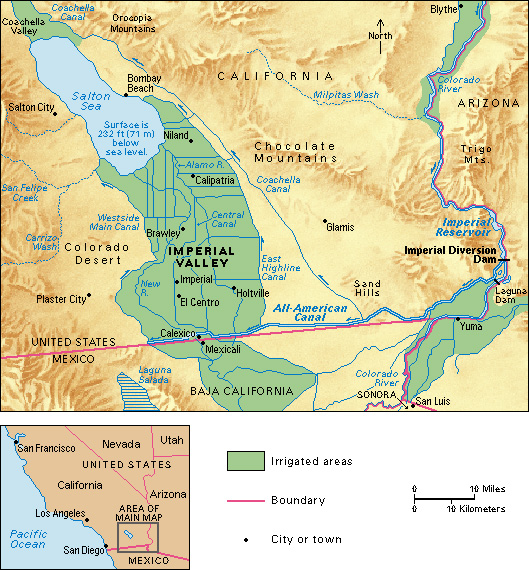
Irrigation is used chiefly in three types of climates. In desert regions, such as Egypt and the southwestern United States, farming would be impossible without irrigation. In regions with seasonal rainfall, such as California and Italy, irrigation makes farming possible even during dry months. In moist regions, such as the eastern United States and western Europe, irrigation maintains crops during periods of drought.
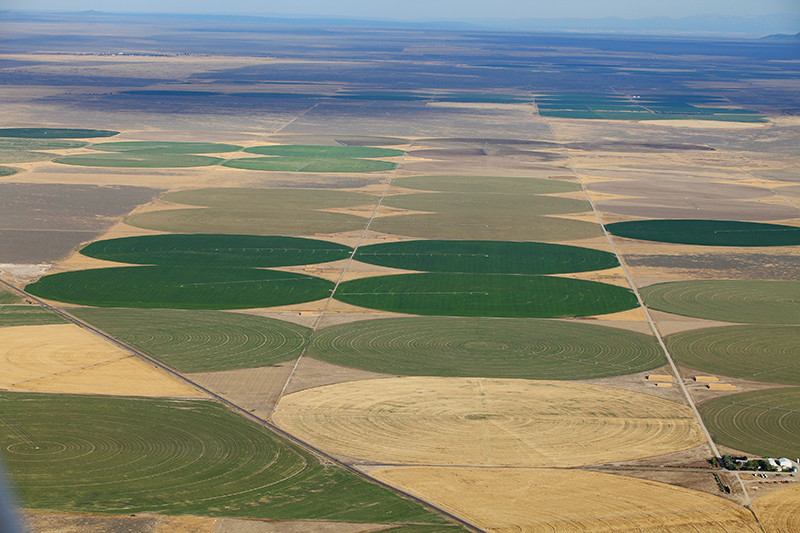
Throughout the world, hundreds of millions of acres or hectares of land are under irrigation. This includes tens of millions of acres or hectares in the United States and over 2 million acres (800,000 hectares) in Canada.
The amount of water needed for farming varies with the type of crop and the climate. For example, rice and cranberries require more water than do cotton and wheat.
In some countries, more water is used for irrigation than for any other purpose. Irrigation accounts for about one-third of the water used in the United States. As the world’s population grows, the demand for fresh (unsalty) water increases steadily. More and more people need clean water in their homes. In less developed countries, safe drinking water is often scarce.
Steps have been taken to ration water in areas where the demand for water exceeds the supply. Fish and wildlife habitat also can be damaged by the removal of water from streams and rivers. In the western United States, for example, the government rations water from the Colorado River to various states. In the Pacific Northwest, Native American tribes and other groups work with farmers to ensure that salmon and other fish will not be harmed by the use of water for irrigation.
Sources of irrigation water
Irrigation requires large supplies of fresh, clean water. The two main sources of fresh water are surface water and ground water.
Surface water
is water on the surface of Earth, such as in streams, rivers, and lakes. It is the chief source of water used for irrigation. Surface water comes mostly from rain and snow. Rain water flows from land into streams and rivers. Great quantities of snow accumulate on highlands and mountains during winter. In spring, the snow melts and runs off into surface waters.
In many parts of the world, engineers build dams across rivers to store water in artificial lakes. These lakes serve as reservoirs that hold water until it is needed for irrigation or some other purpose. A modern reservoir can hold a tremendous amount of water. For example, Franklin D. Roosevelt Lake, the reservoir on the Columbia River behind Grand Coulee Dam in Washington, stores about 5.2 million acre-feet (6.4 billion cubic meters) of water. An acre-foot equals the volume of a container that is 1 foot (0.3 meter) high and has a base of 1 acre (0.4 hectare) in area.

Ground water
is stored beneath Earth’s surface in spaces between rocks, grains of sand, and other substances in soil. Water fills these spaces as it moves down through the soil. The water eventually reaches a layer of rock or of a soil material that it cannot penetrate. The ground above this layer becomes a saturated area called an aquifer. Water in aquifers may require thousands of years to accumulate. Many of the best supplies of ground water are near rivers. In many parts of the world, aquifers are in danger of drying up due to increasing demands for water.
Other sources
contribute little to the total amount of water used for irrigation. In the Negev Desert of Israel, farmers conserve dew and use it to irrigate their fields. In some other areas, farmers use water from sewage treatment plants to irrigate certain crops. Ocean water can be used for irrigation if the salt is removed. However, the cost of removing the salt and pumping the water inland is high.
Bringing irrigation water to farms
Irrigation requires a method of transporting water from the supply source to a farm. Most farms obtain surface water by means of a network of canals. A large canal carries the water from the supply source to smaller canals called laterals. The laterals are connected to ditches that take the water to the crops. If a farm lies at a lower elevation than the supply source, the water flows to the canals by gravity. If the farm lies at a higher elevation than the source, the water must be pumped up to the canals.
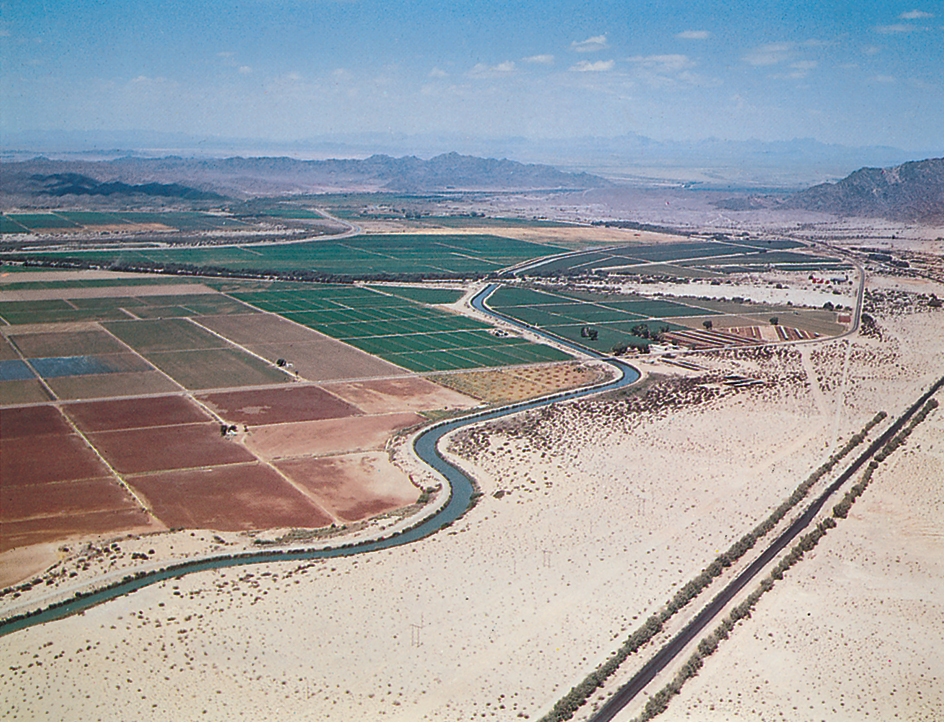
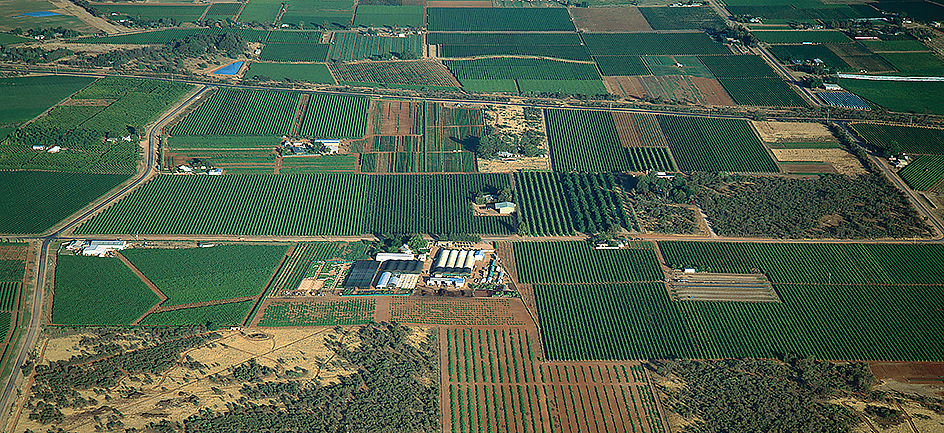
Ground water is pumped to the surface from wells dug below the water table, the top of an aquifer. If possible, an irrigation well is dug on or near the farm it serves. The pump in the well lifts the water into a ditch or pipe that carries it to the crops. If the well is far from the farm, a system of canals or pipes brings the water to the crops.
Irrigation water may be lost before it reaches crops. For example, reservoirs lose water through evaporation. The greater the surface area of the reservoir, the more water is lost. The amount of water lost through evaporation can be reduced by building deep reservoirs that have small surface areas.
In regions with porous soils, water may be lost through seepage. Seepage occurs when water leaks from the bottom or sides of reservoirs and irrigation channels. Seepage from reservoirs can be controlled by lining a reservoir with a layer of fine soil that water does not easily penetrate. Engineers try to build reservoirs in places where the soil does not allow much seepage. Seepage from irrigation channels can be prevented by lining the canals or streams with a watertight material, such as asphalt or concrete.
Evaporation of water through the leaves of plants is called transpiration. Plants absorb water through their roots and lose it through transpiration. The transpiration of weeds growing in or near irrigation channels may cause great loss of water. Some loss from transpiration can be avoided by lining the channels with a watertight material to prevent weed growth along the channels.
Applying irrigation water to crops
Proper application of irrigation water requires skill. A farmer must know when to irrigate different crops and how much water to use. In general, plants need irrigation only after they have used up most of the moisture in the soil. But a farmer also must consider other factors before irrigating. These include the amount of water available for irrigation, the type of crop, the distance of the water table from the surface, and the ability of the soil to hold water.
There are four general methods of applying irrigation water: (1) surface irrigation, (2) sprinkler irrigation, (3) trickle irrigation, and (4) subirrigation.
Surface irrigation,
the most common method of irrigation, is used on about 60 percent of the irrigated land in the United States. In surface irrigation, the farmer runs water over the surface of the field. There are two chief types of surface irrigation, flood irrigation and furrow irrigation.
Flood irrigation
covers the entire surface of a field with water, which soaks into the soil. Small soil walls called dikes or levees hold the water on the field. On many farms, the dikes divide the field into sections. The farmer floods each section individually.
Flood irrigation works best on level or gently rolling terrain where water is plentiful. The soil should be deep and able to hold a large amount of water. This method is generally used on crops of alfalfa and rice, wheat, and other grains. Rice grown in paddies (fields enclosed by dikes) is flooded continuously. Other crops are flooded for only a few hours at a time.
Furrow irrigation.
Most crops that are planted in rows, such as corn, cotton, and potatoes, are irrigated by water from narrow ditches called furrows. In this method, rows of furrows are dug across a field. The farmer plants seeds in the ridges between the furrows. As water enters the furrows, it seeps into the ridges. Furrow irrigation is used on many soils and terrains.
Sprinkler irrigation
provides water through pipes that lie on or are mounted above the ground. This method became popular with the development of inexpensive plastic and aluminum pipe in the 1940’s.
In sprinkler irrigation, a pump forces water through a pipe to nozzles called sprinkler heads. The sprinkler heads distribute water to the crops in a spray or mist. In most cases, the farmer can move the pipe to irrigate the entire field. Self-propelled sprinkling systems have an engine and wheels built into the sprinkler unit. These systems move across a farm under their own power.
Sprinkler irrigation can be used on most crops and soils and on level or rolling terrain. It provides an efficient way to irrigate farms with a small water supply. Sprinkling systems can require large amounts of energy, and so their use is limited to areas with ample and cheap energy supplies.
Trickle irrigation,
also called drip irrigation, furnishes water through plastic tubes that lie on or under the ground. The tubes have small openings called emitters at points corresponding to the location of the plants. As water flows through the tubes, it trickles out of the emitters into the soil. Only the soil directly around the plants receives moisture. As a result, trickle irrigation requires little energy and wastes little water.
Trickle irrigation can be used on all crops, soils, and terrains. Its efficient use of water makes it ideal for areas with small water supplies. The method generally is used only for high-value crops, such as fruits and vegetables.
Subirrigation
applies water from beneath the roots of plants. The water comes from ditches or underground pipes, and the surface of the ground remains dry. Subirrigation requires a watertight layer of soil or rock below the plant roots. Water collects above this layer and moistens the roots.
Providing artificial drainage
Under many conditions, water drains from soil naturally. However, a flood or heavy rain can cause excess water to accumulate in soil. An efficient water management system provides for the artificial drainage of excess water.
When land receives too much water, the water table rises almost to the level of the ground surface, and the soil becomes saturated. Most plants need air in the soil, as well as water. Pores (air spaces) in soil normally provide air. However, the pores of saturated soil are filled with water.
Farmers remove water from soil through underground drains or by means of ditches. Underground drains are made of pipe or hollow tile. They have numerous openings that allow water to enter but keep soil out. Drainage ditches cost less to build than underground drains, but they are expensive to maintain. They also interfere with the movement of workers and machines. Some drainage systems return water to irrigation channels for reuse.
Most irrigation water contains small amounts of soluble salts. These salts remain in the soil, whether crops use the water or it evaporates from the surface of the ground. Excess salts can harm plants. For example, certain salts react chemically with soil particles to change the structure of soil. Such a change can hinder the movement of air and water through the soil. Plants rely on such movement to grow and stay alive.
Farmers remove excess salts from soil by leaching (flushing) the soil with water. Leaching applies enough water to soil to move salts away from the roots of plants. But if the land does not have a good drainage system, leaching may result in saturated soil. In addition, inadequate leaching may not remove enough salt. In the western regions of the United States and Australia, some land that has been irrigated is now of limited use for agriculture because of a build-up of salt.
History
Ancient civilizations developed along rivers that supplied water for farming. As early as 5000 B.C., the Egyptians cultivated land made fertile by the floodwaters of the Nile River. By about 3000 B.C., they had built an elaborate canal system that carried water from the Nile to their fields. Large irrigation systems also had been constructed by then in China, India, and southwest Asia.
Indians in Mexico and Peru used water from streams to grow corn as early as 800 B.C. When the Spaniards arrived in those countries during the A.D. 1500’s, they found great civilizations based on irrigated agriculture. Archaeologists have discovered evidence of early irrigation ditches in the southwestern United States. These ditches date from before the 600’s. Scientists estimate that Indians of that period irrigated thousands of acres or hectares of land in what became central Arizona.
Modern irrigation methods in the United States began in the 1840’s. At that time, settlers built a system of irrigation canals in the Salt Lake Valley of present-day Utah. During the gold rush in California in the late 1840’s and the 1850’s, the pioneers dug many ditches to wash gold from streams. Some of these ditches later served as aids to irrigation.
The Reclamation Act of 1902 authorized the government to build irrigation systems in many western states. Irrigation has expanded rapidly in the West ever since. The Bureau of Reclamation, an agency of the United States Department of the Interior, has provided much of the planning and funds for major irrigation projects. Such projects as the Hoover Dam on the Colorado River have helped transform great expanses of desert into farmland.
